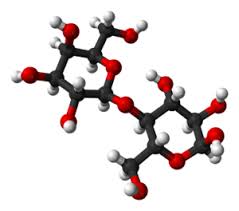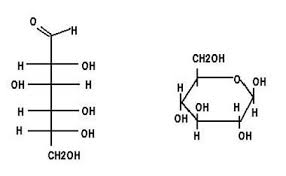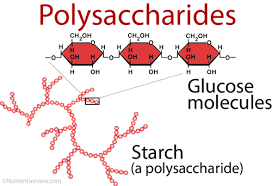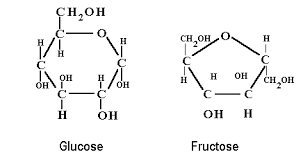Carbohydrates constitute the primary organic components of plant structures and are present to varying degrees in all animal organisms. In plants, carbohydrates are synthesized through photosynthesis nature’s most vital chemical reaction.
This process converts solar energy into chemical energy, facilitating glucose formation from carbon dioxide and water. The reaction is represented by:
sunlight
6CO₂ + 6H₂O → C₆H₁₂O₆ + 6O₂
chlorophyll (glucose)
This fundamental process sustains all animal life through the food chain.
Read Also: Cost of Constructing a Pen of 1000 Layers Cage
Definition and Scope of Carbohydrates

Carbohydrates encompass a broad group of organic compounds including sugars and their derivatives. Chemically, they are polyhydroxy aldehydes or ketones, or compounds that yield these upon hydrolysis. This classification includes:
i. Simple sugars (monosaccharides)
ii. Complex carbohydrates (starches, cellulose)
iii. Specialized compounds (gums, pectins, glucosinolates)
Agricultural Significance of Carbohydrates
Carbohydrates serve multiple essential functions in biological systems:
1. Energy Storage: Primary reservoirs of chemical energy for metabolic processes
2. Structural Components: Cellulose and lignin provide plant cell wall integrity
3. Biosynthetic Precursors: Raw materials for milk synthesis (galactose + glucose)
4. Genetic Material: Ribose sugars form the backbone of RNA and DNA
5. Plant Defense: Certain carbohydrates (polyphenolics, saponins) protect against pathogens
Structural Characteristics of Carbohydrates

Carbohydrates demonstrate stereoisomerism – compounds with identical molecular formulas but different spatial arrangements. For example, glucose, mannose, and galactose (all C₆H₁₂O₆) differ in hydroxyl group positioning at specific carbon atoms.
Optical Activity in Carbohydrates
Carbohydrates exhibit optical isomerism, rotating plane-polarized light either:
-i. Clockwise (dextrorotatory, d-)
-ii. Counterclockwise (levorotatory, l-)
A racemic mixture (equal d- and l- forms) shows no optical activity.
Classification of Agriculturally Important Carbohydrates
Carbohydrates are essential in agriculture, influencing plant growth, animal nutrition, and soil fertility. They are classified into three primary groups:
1. Monosaccharides: These are the simplest carbohydrates, consisting of single sugar units like glucose, fructose, and galactose. They serve as immediate energy sources for plants and animals.
2. Oligosaccharides: These contain 2–10 monosaccharide units, including sucrose, lactose, and maltose. They function in plant transport and storage and promote gut health in animals.
3. Polysaccharides: These are complex carbohydrates made of long chains of sugar units, such as cellulose, starch, and glycogen. They provide structural support in plants and serve as energy reserves in crops and animals.
Key Disaccharides in Agriculture
| Disaccharide | Composition | Agricultural Significance |
|---|---|---|
| Sucrose | Glucose + Fructose | Primary sugar in sugarcane, beets |
| Lactose | Glucose + Galactose | Major carbohydrate in milk |
| Maltose | Glucose + Glucose | Starch digestion intermediate |
| Cellobiose | Glucose + Glucose | Cellulose structural unit |
Structural Polysaccharides in Plants
Read Also: Popular Breeds of Ruminant Animals

Polysaccharides play a crucial role in plant structure and energy storage. The main structural polysaccharides in plants include:
1. Starch: A storage polysaccharide found in plant cells, composed of amylose and amylopectin. It serves as the primary energy reserve in crops like wheat, rice, and maize.
2. Cellulose: A structural polysaccharide that forms the primary component of plant cell walls, providing rigidity and strength. It is indigestible to most animals but is broken down by ruminants and certain microorganisms.
3. Glycogen: Although primarily found in animals and fungi, some plants store glycogen-like polysaccharides. It acts as an energy reserve, similar to starch, but is more commonly associated with non-plant organisms.
Agricultural Implications of Carbohydrate Chemistry
Understanding carbohydrate structures and properties is essential for:
i. Developing animal feed formulations
ii. Improving plant biomass utilization
iii. Enhancing sugar crop production
iv. Optimizing rumen fermentation in livestock
v. Designing biofuel production systems
The diverse roles of carbohydrates – from energy metabolism to structural support – underscore their fundamental importance in agricultural systems and food production chains.
Do you have any questions, suggestions, or contributions? If so, please feel free to use the comment box below to share your thoughts. We also encourage you to kindly share this information with others who might benefit from it. Since we can’t reach everyone at once, we truly appreciate your help in spreading the word. Thank you so much for your support and for sharing!

